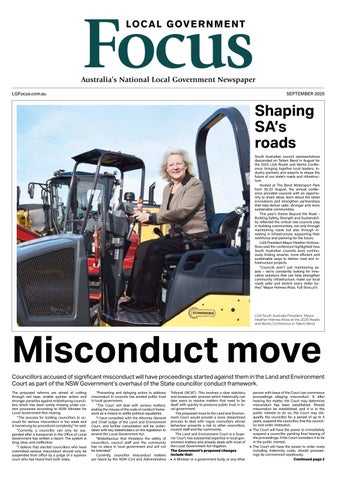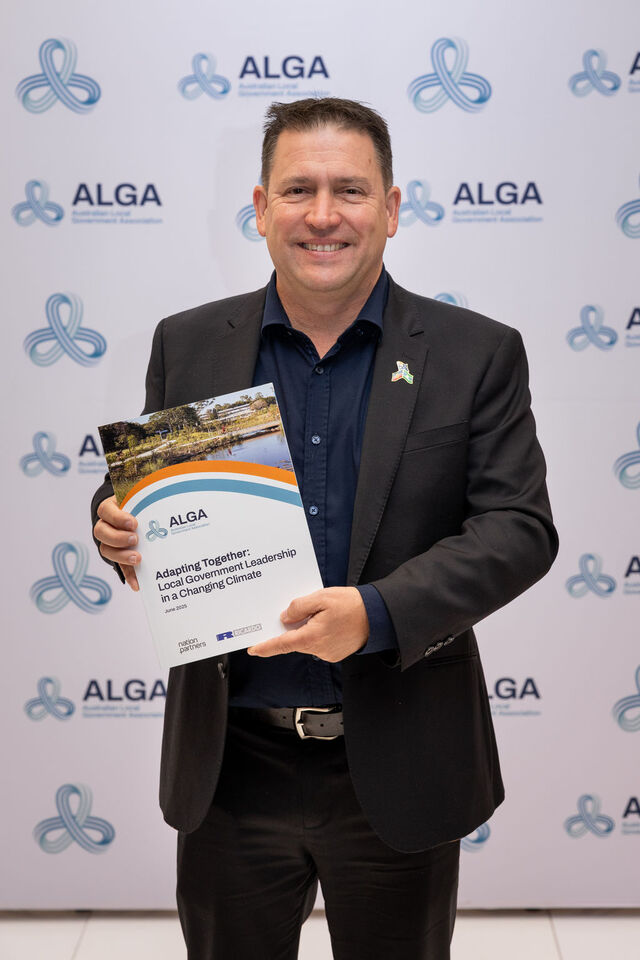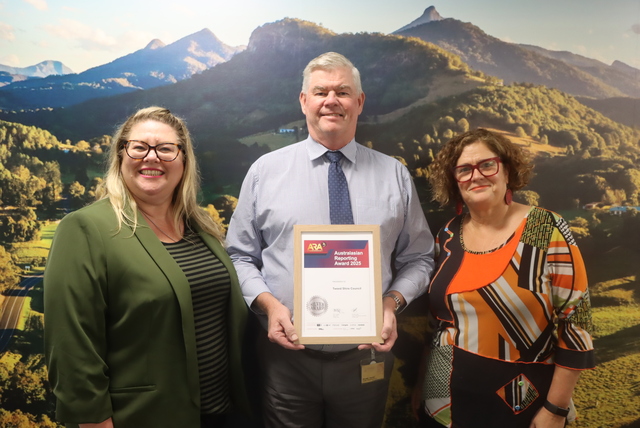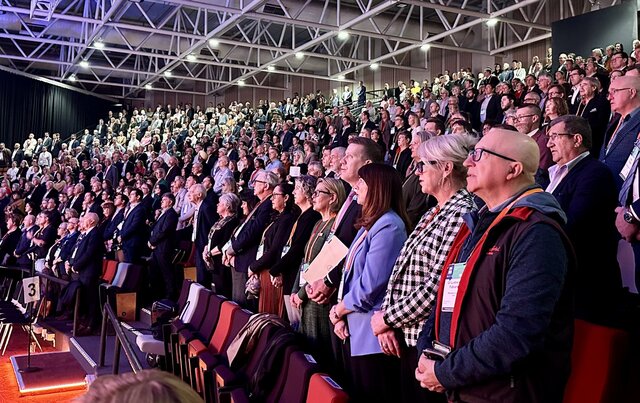City of Nedlands was judged by the WA Local Government Association as the best Local Government in Western Australia after winning the coveted ALCOA Leadership Award for 2003. This is how we did it! Put simply, it didn’t happen overnight, the City has been on a best practice journey for some time now.
The journey has not been about beating people or being better than others, but rather doing the best we possibly can, so each and everyone of us at Nedlands can make a positive contribution to society and reach our full potential.
The process of change started when the organisation set its first strategic plan. This gave a clear direction about where the City was heading, in conjunction with the community’s aspirations. To support the Strategic Plan we needed to ensure that the right structures and systems were in place. This required each manager to identify the processes they manage to enable us to map all the organisation’s core processes from the customer’s perspective – that is, what are the input, process steps, outputs and outcomes expected by our customers?
Once mapped, each manager was asked to identify the key performance indicators for their processes. They then rated the process against current levels of performance. Benchmarking and other activities were employed to help understand where changes could be made in the processes. From there we asked, “how do we control our processes to ensure we achieve consistent and predictable results?” The answer was to implement a quality assurance system across the whole organisation. This was achieved through an accreditation process where we gained the status of a Quality Endorsed Company.
The City of Nedlands has achieved this industry benchmark across all Local Government products and services. Today an automated Business Management System captures all business procedures and process improvement requests.
The next goal was to put into place continuous improvement processes to increase performance and customer service levels. Staff were trained in continuous improvement methodologies with improvement tools and techniques to support management. External data was captured across many disciplines to indicate where we could achieve best value from our improvement activities from a customer perspective.
To support this value for money thrust, ten strategic change documents were developed to outline our approach to business improvement in the best practice areas of leadership, strategy and planning, data, information and knowledge, people, communications, continuous improvement, processes, product and services, and business results.
Chief Executive Officer, Dr Shayne Silcox said that winning the ALCOA Leadership Award reinforced that the City was on the right track.
“It has given confidence to citizens and stakeholders that we are performing at high levels and always seeking opportunities for improvement,” Dr Silcox said. “It has also allowed us to ensure that the organisation is sustainable and that the quality of life can be maintained for all citizens.”
The results of the City’s management practices over a four year period are illustrated on a Scorecard which can be found by visiting the City’s web site at www.nedlands.wa.gov.au
Sharing best practice internationally
Soon after Nedlands was judged the best Local Government in Western Australia, Indonesian Local Government leaders made a site visit to the City to benchmark their organisations’ operations and learn how to implement best practice.
Mayor Laurie Taylor formally welcomed the visitors of the Regional Development Institute and described the role the City of Nedlands plays within Local Government.
The visit was part of a week’s program in Perth for the delegates who were sent to gain skills in training government staff in office systems, local planning, environmental management and income through property management. Time was spent providing the delegates with an overview of the organisation and showing them some of the best management practices that the City has implemented. The group was particularly interested in the organisation’s financial, waste management and planning processes.
A letter of intent to benefit both parties was signed for a partnership arrangement for the implementation of business excellence. The agreement will allow both parties to share skills and expertise, from time to time share employees, and to freely exchange relevant information.
Making good progress towards community wellbeing
As part of our mission to pursue excellence in community leadership the City has developed a Community Wellbeing Plan and Scorecard. The Plan and Scorecard were put together with the help of a dedicated team of councillors, staff and residents in an effort to identify those key factors that will make a positive difference to the future of Nedlands.
The aim of this program is to measure the City’s progress towards sustainability using indicators of social, economic and environmental wellbeing.
Although unique in Western Australia, this approach has been adopted by the Cities of Calgary in Canada, Newcastle in New South Wales, Onkaparinga in South Australia, the State of Oregon in the USA, and the City of Melbourne in Victoria .
Key factors critical to the health and wellbeing of citizens were identified as community activities, sense of community, support and relationships, health and safety, biodiversity – bushland and green coverage, built environment, transport and business activity.
For each of these some ways to measure their status were developed. These indicators were then put into a Scorecard that will be annually updated by a telephone survey of 500 residents and other sources of data already available.
In total, 31 wellbeing indicators were identified. The first survey has recently been completed with some interesting results:
- 92% of our citizens say they feel happy most or all of the time
- 38% of our citizens actively volunteer
- 66% of our citizens feel a strong sense of connection to the Nedlands community
- 83% of our citizens do at least 30 minutes of physical activity three times a week
- 66% of our citizens know five or more people in their street by their first name.
For further information on the Community Wellbeing Plan and Scorecard visit Council’s web site at www.nedlands.wa.gov.au under ‘Community Wellbeing Plan and Scorecard’.
A snapshot of Nedlands
The City of Nedlands encompasses some of Perth’s most desirable and diverse residential areas. It includes scenic frontage to the pristine Swan River, significant areas of natural bushland and frontage to Swanbourne Beach on the Indian Ocean. Traditionally one of Perth’s most prestigious living areas situated just a few kilometres from the City of Perth, via a picturesque riverside drive, the suburbs within the City’s boundaries are homes to many of Western Australia’s corporate and professional leaders.
For more than a century, Nedlands has become known for its gracious homes, many of which overlook the wide expanses of the Swan River, and its leafy streetscapes, well maintained parks, playing fields and sporting clubs.
Unlike more recently developed residential areas, Nedlands does not have a major shopping complex to form the hub of its commercial and retail focus. Instead, it has a number of traditional shopping strip areas ensuring community meeting points are spread throughout the city.
Sport and recreation play an important part in the lives of Nedlands people. Per capita there are more sporting clubs within the City’s boundaries than any other Local Government in Western Australia. These include tennis, cricket, lawn bowls, four football codes, basketball, netball, surf lifesaving and aquatic sports associated with the Swan River.
Understandably, given the frontage to the river, sailing from a number of yacht clubs remains one of the most popular recreation activities. Cultural events also form an integral part of the lifestyle of the 21,000 Nedlands residents with numerous summer concerts held in the parks and along the riverfront, as well as art exhibitions and other events.
Nedlands received City status in 1959, indicative of the transformation from the pioneer times when small farms, market gardens and orchards provided the primary source of living for the area.







